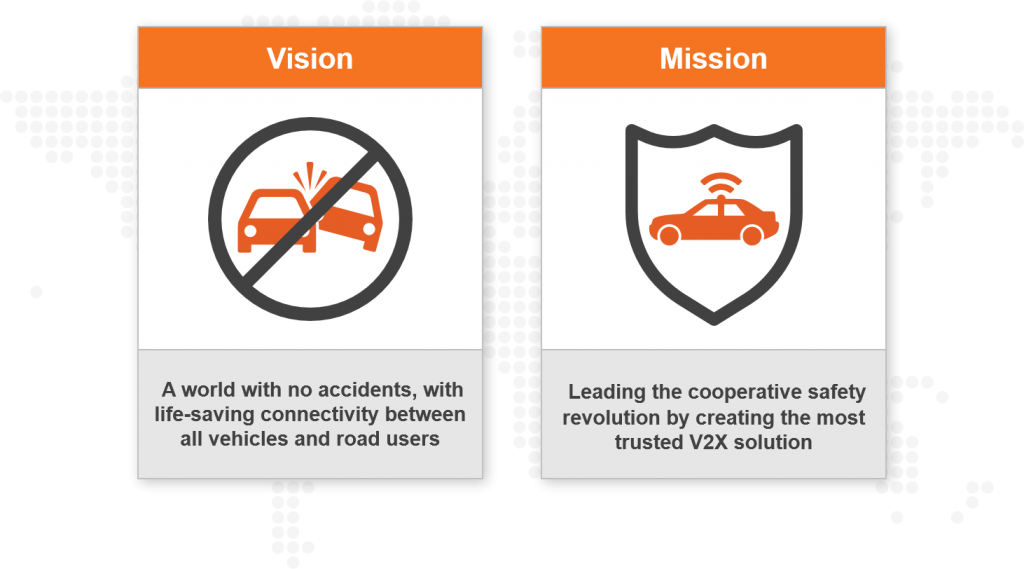
By: Lee Cohen, Autotalks’ VP HR
During the last couple of weeks, I had the honor to be part of an exciting and inspiring process – defining our company’s vision and mission statements. These kinds of discussions always involve so many perspectives – business, strategy, wishes, emotions, knowledge, numbers, etc. – and for me, as “the new girl in town”, who joined Autotalks six months ago as VP HR, it was a great opportunity to learn more about the company and to be a part of one of its meaningful moments.
From an HR perspective, the company’s vision and mission are both, simultaneously, the starting point and the lighthouse.
I believe that when you create your vision and mission statements, you are actually articulating your hopes and dreams for your business. This, in turn, will become to be the inspiration for your strategic planning, your goals and your organization’s culture.
There are a lot of discussions about the difference between vision and mission; one short and simple definition that caught my eyes is that a mission describes what your business does today, while a vision describes what you hope to accomplish by executing the mission.
A powerful vision, from my perspective, is the one that informs and inspires at the same time. One that creates energy and inspires individuals and organizations to commit, to persist and to give their best. This is the kind of vision we aimed to crystalize in our definition process.
Although our vision was supposed to be very clear – our product is designed to prevent road accidents and save lives! – I must say that it was not an easy process. Autotalks is a mature startup. The idea behind it came from the founder 12 years ago, and the company has grown and evolved over the years. The leadership team together with the company’s talented employees pushed the company forward, yet no clear vision statement was ever defined. Most of the current employees, joined the company in the last couple of years and are not familiar enough with the Autotalks story. It was clear to me that in order to continue being a market leader and to engage the employees to be committed for the long journey, we had to define a clear and inspiring vision that will emphasize our approach and will strengthen our employer brand.
So, a few weeks ago, twelve of the company’s leaders gathered in one room to discuss the vision and mission, while each of them brought to the room his/her own perspective, ideas, thoughts, and ego…
The main challenges in this situation were to create a good discussion with a culture of listening, patience, and openness and then to find the thread that connects all the ideas and opinions to one coherent and meaningful statement. For me, as the discussion facilitator, it was important to let everyone speak out and bring their voice to the table. The idea of hearing them all stemmed from a desire to achieve two important goals: using the vast experience and wisdom in the room, and ensuring the leaders’ engagement, since they should be the ones that will communicate and implement the vision and mission throughout the organization and to the outside environment. The definition discussion was indeed stormy but at the end of the day I think we succeeded in crystallizing the kind of vision we aimed for, the one that informs and inspires at the same time.
Our Vision – A world with no accidents, with life-saving connectivity between all vehicles and road users
Our Mission – Leading the cooperative safety revolution by creating the most trusted V2X solution
So now, that the vision and mission statements are created, we should not hide them, but be proud and share them with the world, starting with our employees. I believe that having a clear vision can impact dramatically the employees’ engagement.
A recent report from the World Economic Forum found that a ‘sense of purpose’ in work is the second most important criteria for talents considering a job, after the compensation aspects.
When employees know and understand the company vision and believe in it, they are much more likely to tie their individual values and aspirations to that shared vision. This allows them to have a greater sense of ownership and belonging, motivating them to be proactive and offer new and innovative ideas. People always want to feel part of something bigger and to have confidence that their work is contributing to fulfill the company vision.
To ensure this impact, the company leaders must be committed not just to the definition process but also to the implementation of the vision and the mission throughout the organization.
The challenge will always be to make sure that it will not end just as a poster on the office walls but will serve as an inspiring compass that is translated to the actual organizational culture.
Some examples of inherent processes within the organization’s life cycle that can serve as a great platform for implementation are: Candidates interviews, new employees’ onboarding, departments and individuals goals setting, company meetings, relating new projects and initiatives back to vision, “Employee Spotlight” – specifically when valued employees are recognized for their accomplishments, asking them to express their view about the company vision and share how it inspires them.
I truly believe that vision and mission statements are not just a theoretical exercise. They are designed to connect and inspire all of us to work together with alignment and purpose. It comes from the future and informs and energizes the present. It defines the core reason for a company’s existence and makes work more meaningful.
Based on it, we can more easily establish our strategic plan, define our core values, and cultivate an appropriate and empowering organizational culture.
The next challenging and inspiring step will be to derive from the company vision and mission our core values, but this will be the next chapter of this blog. I can’t wait!








